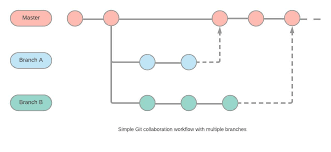Version control systems are essential tools for managing and tracking changes in collaborative analytics projects. They enable multiple team members to work on the same project simultaneously, keep track of revisions, and facilitate collaboration and code sharing. Git is one of the most widely used version control systems. Here’s an introduction to version control systems, focusing on Git:
- What is Version Control?
Version control is the practice of tracking and managing changes to files and code over time. It allows you to keep a historical record of modifications, revert to previous versions, and merge changes made by different team members. - Git:
Git is a distributed version control system designed for speed, scalability, and flexibility. It is widely used in software development and increasingly adopted in analytics projects. Git offers the following key features:- Distributed: Git is a distributed version control system, which means that each team member has a complete copy of the project’s entire history on their local machine. This allows for offline work and easy branching and merging.
- Branching and Merging: Git makes it easy to create branches, which are independent lines of development. Team members can work on separate branches and later merge their changes back into the main branch (often called the “master” or “main” branch).
- Version History and Tracking: Git maintains a detailed history of all changes made to the project, including who made the changes and when. This makes it easy to track modifications, review code, and revert to previous versions if needed.
- Collaboration and Remote Repositories: Git enables collaboration by allowing team members to share their changes with each other through remote repositories. Remote repositories serve as a central hub where team members can push their changes and pull the changes made by others.
- Conflict Resolution: In collaborative projects, conflicts can occur when two or more team members make changes to the same file or code simultaneously. Git provides tools to handle and resolve these conflicts by allowing manual intervention or automated merging.
- Workflow in Git:
Git supports various workflows, but a common approach is the “feature branch workflow.” In this workflow, each feature or task is developed on a separate branch. Developers create a new branch from the main branch, make their changes, and then merge their branch back into the main branch when their work is complete. - Hosting Platforms:
Git repositories can be hosted on remote platforms such as GitHub, GitLab, or Bitbucket. These platforms provide additional features like issue tracking, code review, and collaboration tools that enhance the collaborative development process. - Command-Line and GUI Tools:
Git can be used through the command-line interface (CLI) by executing Git commands in a terminal. Additionally, there are several graphical user interface (GUI) tools available that provide a visual representation of the version control process.
Using Git for collaborative analytics projects allows team members to work together efficiently, track changes, and manage codebase versions. It promotes collaboration, code integrity, and transparency throughout the development lifecycle. Learning Git and version control principles is valuable for analytics professionals working on collaborative projects and is widely applicable beyond analytics, extending to software development and other fields involving code management.
